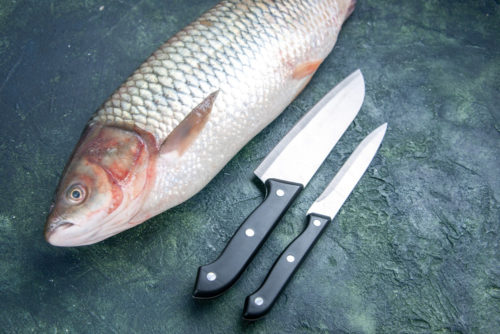When it comes to maintaining your precious kitchen tools, knowing how to remove corrosion from Japanese steel knife is essential. Japanese knives are famed for their sharpness, strength, and beauty, but they can also be susceptible to corrosion if not properly cared for. In this detailed guide, we will walk you through the necessary steps to remove corrosion and keep your Japanese steel knife in perfect condition.

Understanding Corrosion on Japanese Knives
Corrosion on your Japanese steel knife typically manifests as rust. This can occur due to prolonged exposure to moisture or lack of proper maintenance. Understanding the nature of the corrosion on your knife will help you choose the correct method for its removal.
Why Japanese Steel Knives Rust
Japanese steel knives, despite their high quality, can rust if not maintained properly. This usually happens because these knives contain a high-carbon content, which makes them prone to corrosion.

Preparation Before Removing Corrosion
Before you start the process, gather the necessary tools and materials. These typically include:
- Soft cloths
- Rust erasers
- Lemon juice
- Baking soda
- Vinegar
- Patience and precision
Take Precautionary Measures
Ensure you’re working in a well-ventilated area and wearing gloves to protect your hands from any chemicals or substances you may use during the cleaning process.

Using Basic Household Items
Vinegar and Baking Soda Method
Mixing vinegar with baking soda creates a powerful rust-removing paste. Apply this paste to the blade and let it sit for a few minutes before scrubbing it gently with a soft cloth.
Lemon Juice and Salt Method
Lemon juice acts as a natural acid to break down rust, while salt provides the abrasion needed to remove it. Sprinkle salt on the rusty area of the knife and then squeeze fresh lemon juice over it. Scrub gently after letting it sit.

Commercial Rust Removers
Choosing the Right Product
If household items do not work effectively, commercial rust removers are an option. Ensure the product is safe for use on knives and follow the manufacturer’s instructions to avoid damaging your knife.
Post-Cleaning Care
Sharpening Your Knife
After removing corrosion, sharpening your knife is essential to restore its edge. You can sharpen your chef knife using a whetstone to maintain its functionality.
Applying Protective Coating
Once the rust is removed, apply a thin layer of mineral oil to the blade to prevent future corrosion. This acts as a protective barrier against moisture and other elements that cause rust.
Regular Maintenance Tips
Consistently maintaining your knife will reduce the chances of rust. Clean your knife immediately after use, dry it thoroughly, and store it in a dry place.
Best Practices
Use the knife for its intended purposes only, avoid soaking it in water for prolonged periods, and regularly check for any signs of rust or corrosion.
Conclusion
By following these steps on how to remove corrosion from Japanese steel knife, you can ensure that your knife remains in top condition for years to come. Regular maintenance and care are crucial in preserving the sharpness and beauty of your beloved kitchen tool. For more information on maintaining your kitchen knives, you can refer to this informative guide.
FAQs
Is it necessary to oil my Japanese knife regularly?
Yes, applying a light coat of oil helps prevent moisture from causing rust.
Can I use any type of oil on my knife?
Use food-grade mineral oil or specialist knife maintenance oil for best results.
How often should I sharpen my Japanese steel knife?
Regularly sharpen your knife to maintain its edge, ideally after every few uses.
As an Amazon Associate, I earn from qualifying purchases.


